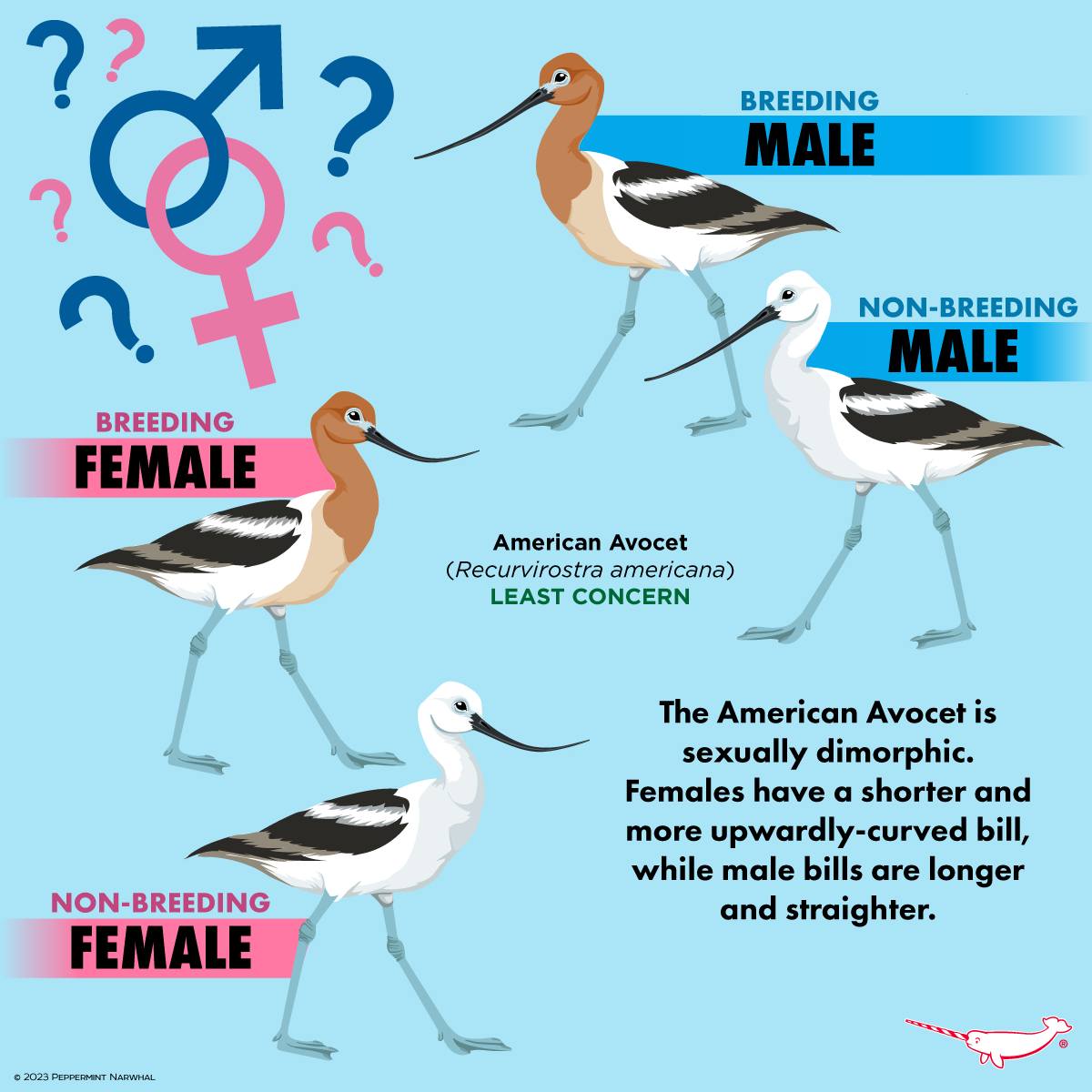– Sexual dimorphism in American Avocets, highlighting differences between males and females
– The significance of breeding and non-breeding plumages in American Avocets
– Conservation status and threats facing American Avocets
– Importance of habitat conservation for the American Avocet
– The role of citizen science in American Avocet conservation
The American Avocet (Recurvirostra americana) is an elegant wader known for its distinctive upturned bill and striking plumage variations between seasons. This bird exhibits sexual dimorphism, a biological term that refers to the differences in appearance between males and females of the same species. In American Avocets, these differences are not just superficial; they play crucial roles in their breeding behavior and habitat use.
One of the most visible differences between male and female American Avocets is their bill shape. Females possess a shorter, more sharply upturned bill than males’ longer, slightly straighter bill. This subtle difference is more than just a morphological curiosity – it likely has practical implications in their foraging behavior, allowing males and females to utilize different feeding niches within the same habitat. Such niche differentiation could decrease competition for food between the sexes, ensuring both have access to the resources needed to thrive.
Beyond bill morphology, American Avocets are known for their remarkable plumage transformation from the non-breeding to the breeding season. They are the only species of avocet that undergoes such a significant change, transitioning from a pale gray and white winter coat to a striking pattern of black and white accented with a unique rusty or cinnamon coloration on the neck and head during the breeding season. This seasonal change in appearance plays a vital role in social signaling and mate selection within their populations.
Despite their beauty and intriguing behavior, American Avocets face several conservation challenges. Habitat loss due to urban development, agricultural expansion, and climate change poses a significant threat to their breeding and feeding grounds. Wetlands, essential to the American Avocet’s lifecycle for nesting and foraging, are increasingly threatened, leading to population declines in some areas. Additionally, disturbances by human activities near nesting sites can lead to reduced breeding success.
Conservation efforts for the American Avocet include protecting critical wetland habitats through legislation and land management practices. Restoration projects to improve wetland quality are also vital for their survival, providing them with the necessary conditions for feeding, nesting, and breeding.
Citizen science plays a pivotal role in the conservation of American avocados. Bird enthusiasts and amateur naturalists can contribute valuable data on avocet sightings, breeding success, and habitat conditions through eBird and the Christmas Bird Count. This information helps conservationists track population trends and identify critical habitats that require protection.
In summary, the American Avocet is a fascinating bird species whose unique characteristics demand attention from bird watchers and the conservation community. Understanding the differences between males and females and the importance of their breeding and non-breeding plumages can enhance our appreciation of these birds and their ecological roles. Moreover, recognizing the threats they face and the importance of habitat conservation underscores the need for ongoing efforts to ensure the survival of this captivating species. Through continued research, habitat protection, and public engagement in citizen science, we can hope to secure a thriving future for the American Avocet across its range.
*****
Source Description
Male Or Female? – American Avocet (Recurvirostra americana)
The American Avocet is sexually dimorphic. Females have a shorter, more upwardly-curved bill, while males are longer and straighter.
Did You Also Know? – It is the only avocet species that exhibits breeding and non-breeding plumages.
2024 is here! Do you have your 2024 Peppermint Narwhal Animal Holiday Calendar? If not, shop now at the Store:
www.peppermintnarwhal.com.


